This is a continuum of our Synergistic Research – Full Loom Edition series. This article will be focusing on their room acoustic products.
Jim Smith’s Get Better Sound was one of my first reads when I decided to really start building my system. If you haven’t had a chance to read it, I highly recommend it. One of the key takeaways is the importance of room acoustics. It easily explains why one set of speakers may sound fantastic at one venue, and terrible at another – and that’s something I’ve heard first hand.
It’s also why sometimes it’s difficult to truly judge a speaker at large audio shows. I’ve done what I could to treat my room but am always open for ways to improve my room acoustic – especially taming those troublesome lows.
The story begins with the Black Box…
When I had heard about the Synergistic Research Black Box, it piqued my curiosity. Not just due to performance claims, but also its unobtrusive nature. In some ways, it sounds too good to be true – with traditional bass traps typically being large, bulky, and with low WAF.
Having heard some good commentary from some friends and wanting to maximize my bass performance, I took the plunge and purchased one as a Christmas gift to myself (Yes, I’ve been backlogged that much. New job and puppy).
Sitting on three spikes, it measures at 9.5″ x 9.5″ square and about 6″ high, the Black Box is advertised as a low-frequency resonator array that fixes bass node and phasing issues. It’s actually quite attractive and depending on where you place it – invisible to the casual eye.
I somehow managed to actually wait until Ted Denney & Andy Wiederspahn’s visit before attempting to set up the Black Box. One of the things I learned during their visit was how their acoustic products work in layers – and with each other. To be honest, that wasn’t very evident from my initial research of their products.
The Layers of Treatment
I’ll attempt to elucidate Synergistic Research’s pillars of acoustic treatments:
- HFTs: These are tiny little metallic dots and are your first layer of acoustic treatments. They can be a tweaker’s dream, requires a bit of work and patience, and not the right tool for guys looking for something more plug and play. You can start with as little as 5, or up to nearly 30 to really maximize your room treatment. With an array of four different HFTs, there could be confusion on how to properly set them up. Luckily, the HFT manual does a decent job of explaining placement.
- Standard (grey) – These will make up the majority of dots in your room. They improve clarity, noise floor, and soundstage.
- 2.0 (black) – These work very well in creating warmth, especially when placed on a speaker.
- X (gold face) – These improve focus, air, and resolution. I would recommend using these sparingly.
- Wide Angle – You don’t need many of these to significantly expand your listening space in all directions. Incredible pieces.
- Black Box: Unbeknownst to me, the Black Box is fairly dependent on the HFTs to maximize performance. You can set up to 3 Black Boxes in various locations to maximize performance. While they can work in lieu of traditional bass traps, they work even better with them.
- Atmosphere XL4: The last leg of acoustic treatments. The Atmosphere products is essentially a large antenna that generates an RF signal to alter the ambiance of the room you’re in. Yes, I know that sounds a bit like those settings you see on consumer grade receivers or your old walkman- but they do not sit on the signal path at all. Optionally, they also come with a red or green Atmosphere Tuning Module (ATM) that functions like a giant HFT on its own. They come standard with the Atmosphere XL4.
Lastly, all these devices are passive! They do not sit on the signal path but instead alters the acoustics in your room directly. It’s fascinating.
Setting up the HFTs, Black Box, and Atmosphere XL4
HFTs
The HFTs themselves have a layering process and will involve some trial & error. The HFTs themselves are small, about a quarter inch in diameter and height. Each HFT types can be identified by the slightly different tint on their face.
The installation itself is pretty straightforward – a small dab of mounting putty on the back of HFTs and stick. Physically, that’s probably the simplest set of steps ever. However, it can actually be quite a drawn-out process. The manual will give guidelines as to the general location where you want to install them, but it’ll take a bit of experimentation to really dial in the exact location.
Before you ask – no, the amount of putty you apply to the HFTs won’t have any sonic consequences. 😉
Some examples in setting up HFTs in our room:
- In our B&W 804D2’s, we found the standard HFT to sound better between the port and woofer than it was under the woofer.
- For the HFT that sits on top of the speakers, it ended up sounding best at the very tip tail of the bullet tweeter that sits atop the unit. It took a couple rounds of listening to find where on the tweeter sounded best.
- Here’s a counter-intuitive example: While the manual suggests some of the HFTs sit centers between the two speakers, the literal center might not sound the best. In one case, we found it to sound best a few inches skewed to the right. While another “center” HFT (in the ceiling), skewed a tad to the left.
- It’s also worth noting that sometimes the changes can be subtle, sometimes even slightly for worse, and sometimes it just clicks into place and jumps another step.
- I will say that it was an easier process having someone else (Ted in our case!) move the HFTs so that we could quickly A/B and figure out precise locations.
Black Box
The black box is much simpler to set up, and physically installing is just a matter of screwing on the three spikes it stands on and testing the correct placement. Most of it is in a metal mesh surrounded by a bezel ring around the top and bottom. For placement, it ended up sounding the best just in front of my coffee table near the middle part of the room.
Atmosphere XL4
The Atmosphere XL4 is a surprisingly tall unit to unbox– standing at about 4 feet tall. There’s a bit of setup here in running a grounding cable to the Active Ground Block (or it can plug in via a ground to your outlet) and hooking up the power source. The power just requires a nominal 5V connection.
Ideally, it should be placed in the center and rear of the room so that it can best broadcast it’s RF signal. Unfortunately, I do have a large flat screen TV hung on the wall; so we ended up sitting it atop a few nickels (as to not scratch the floor) to the front right corner of the room.
As for the ATMs, the Red seems to work better for this space and was placed in the middle of the room. If you’re able to place the XL4 in the center, there’s a nice ATM slot at the top of the tower.
System Setup
- Power Conditioner:
- In all scenarios, a single High Fidelity Cables MC-0.5 was plugged into the same duplex as the associated power conditioner
- PS Audio Power Plant P10 (Latest firmware) upgraded with a Synergistic Research Blue Fuse, and the Synergistic Research Atmosphere Level 3 HC cable was used for the main power cable.
- The Synergistic Powercell PC12SE with the Galileo upgrade was also used in later testing along with their respective Synergistic Research cable.
- Source:
- Lumin S1 Streamer/DAC
- Ethernet: SOtM dBL-CAT7 ethernet cable
- Power: Dynamic Designs Challenge AE15 Digital power cable, Synergistic Research Atmosphere Level 3 Digital, Au24 SX powerChord MP
- Isolation: Synergistic Research Tranquility Base UEF XL
- Lumin S1 Streamer/DAC
- Preamplifier:
- PS Audio BHK Signature Preamp
- Interconnects: Audience Au24 SX XLR cables, Synergistic Research Excite XLR, Audience Au 24 SX XLR
- Power: Shunyata Research Alpha Ztron Analog power cable, Synergistic Research Atmosphere Level 3 Analog, Au24 SX powerChord MP
- PS Audio BHK Signature Preamp
- Amplifier:
- PS Audio BHK Signature 250 Stereo Amp
- Interconnects: High Fidelity Cables Reveal XLR cables, Synergistic Research Excite XLR, Audience Au 24 SX XLR
- Power: Shunyata Research Alpha Ztron HC power cable, Synergistic Research Atmosphere Level 3 HC, Au24 SX powerChord HP
- PS Audio BHK Signature 250 Stereo Amp
- Speakers:
- B&W 804D2
- Speaker cables: DanaCable Sapphire MK.2 speaker cables, Synergistic Research Excite Speaker Cables, Audience Au 24 SX Speaker Cables
- B&W 804D2
- Network:
- NAS: WD MyCloud EX2
- Router/Switch: TP-Link CR1900 Cable Modem Router
- Ethernet: SOtM dCBL-CAT7
- Power: SOtM SPS-500 Power Supply
Listening Notes
HFTs
These HFTs surprised me the most – their effect on the room was immediately audible. With just a few in our system and we were beginning to hear the holistic changes in the room. We started with the speaker only sets of HFTs, one module per side at a time. Over the course of testing and tuning, we hear subtle shift and changes that end up accumulating to a significant change. The soundstage would grow bigger and provide more depth.
There’s a “blanketing effect” which creates a more enveloped space. It’s noticeable in little details like the way the cymbals pops and rolls off in Wynton Marsalis’ Feeling of Jazz, or the way the car zips around a vortex-like sound effect in Led Zepplin’s Whole Lotta Love.
HFT stands for High Frequency Transducer but what surprised me the most was how these tiny devices affected the low end too. Details like the kick drums in Alicia Keys’ VH1 Storytellers performance of Empire State of Mind become more detailed with texture in the way it strikes, and with more precision in how it thumps into your chest.
Especially when used with speakers, the right combination of HFTs may elevate them into a much better speaker. We’ve tried them on a variety of bookshelves and floorstanders, even in our cars and home theaters. The changes are easy to hear but do require some tweaking.
From our listening tests, the HFTs do exactly what they describe on their product page. What’s interesting, we listened first and later affirmed the SR’s descriptions with our notes. You really have to have the experimental heart to get the most of out of these – but when you do, you’ll be rewarded.
HFT Wide Angle (Set of 3, $399)
(Update 9/25/18): We recently upgraded our room acoustics with the addition of the HFT Wide Angles. We were very impressed at AXPONA at what the HFT Wide Angles did for their large showroom but very curious as to how they would perform in a much smaller space like in our listening room. We expected modest improvements given the smaller stage; but wow, we were mistaken.
The stage now regularly expands to very edges of the room as if our B&W’s were placed against the wall. Previously certain effects and pieces of the music played from those edges, now that’s become the new norm. At the same time, it’s not like the information that goes beyond those borders that feel artificial or stretched. In some tracks, like Pink Floyd’s Eclipse, it almost feels like the music starts wrapping around your head. We were also surprised to see just a slight increase in height information as well. In Santa’s El Farol, now there is a clear delineation in the differences in height between Santana’s guitar and the bongo drum in the back. There’s a slight increase in perceived resolution, possibly due to the larger canvas that the music is being played on.
We wanted to pay closer attention to vocal heavy tracks as well to see how the HFT Wide Angles would impact the coloring. The increased resolution and soundstage could lead pull warmth away, but we were pleasantly surprised to see that it did not in our system. Diana Panton’s ‘A Little Girl, A Little Boy, A Little Moon’ is a great exhibit of this. Diana’s voice is beautiful; but for this track, can sound a little cold and tense without the right amount of warmth in the system.
We also did have a single HFT X Wide Angle on hand to test. It is important to note on the HFT X Wide Angle may not be for everyone. It’s a mash-up of the capabilities of the HFT X that are used to increase detail and air but placed into the wider stage dispersion of the HFT Wide Angles – so if your room is fairly lively and not treated or dampened, it can negatively impact performance. Because our room is fairly well treated with tube traps in the corners and DIY soffit traps for the ceiling, we also changed out one of the HFT Wide Angles for an HFT X Wide Angle. We were glad to hear that it added a bit more focus and air to the individual components in a musical set without robbing us of the warmth we enjoyed previously.
Synergistic Research has done it again — and as a result, these will be staying in our reference system. I love that the HFT’s stay out of the signal path and allows me to tweak an area of the system where I don’t already have a component. It does take a bit of testing and playing around with the right spot to fully realize the benefits. I sacrificed an afternoon of NFL football to get it just right. But when it’s dialed in, it’s like I’ve moved into a bigger home without the expensive Southern California real estate prices!
Black Box
The next thing we layered in is the Black Box. After our initial testing of placement, an insanely easy A/B test. We listened with the box resting near the edge of our rug, put the box outside into the patio, listened again, and put it back in after listening. While the Black Box seems like it’s advertised as a bass tuning and improvement device — it’s more than that. It seems to build upon what the HFTs were doing and takes it up another notch.
Wynton’s trumpet in the Feeling of Jazz rips seemingly out of nowhere and was a bit startling. The bass is tighter and comes with focus and definition.
The individual voices in Childish Gambino’s This is America track become more individualized, wider and more forward. That track really shows off the impact of the Black Box. You really get the sense of terror in the way the bass rolls a minute or so into the song, and the explosion towards the end of the song pops into you with a sense of dimension and velocity. Without the Black Box, the bass roll is a bit muddled and loses that sense of calamity and terror; and that pop whithers a bit like a confetti gun and less like a cannon.
In Chris Thile and Edgar Meyer’s collaboration, ‘Tarnation‘, we love the bass rips with furor and intensity with the Black Box present. Without the Black Box, the intensity calms and the atmosphere sounds duller and less incisive.
The other apparent thing– and this is maybe where Ted’s comment about the Black Box needing to work with the HFTs come in; was how the two musicians seem to come alive with their own identity and individual flair.
It’s worth noting that while my wallet isn’t going to like it, a second Black Box did improve performance further.
Atmosphere XL4
The final piece to really top off their product line is the Atmosphere XL4.
It takes the elements of what the HFTs do and elevates it to another level. It also takes into account the time of day you’re listening. Systems typically sound better in the evenings when the noise has died down. Ted Denney suggests that ambient solar disturbances and man-made RF noise will fill a room during the day, deteriorating acoustic reproduction. The Atmosphere XL4 helps to compensate and adjust for this with a touch of a button.
The hardest part to comprehend is how one can use the app to control the “scenes” in the manner that you would like. It sounds super cheesy, but it reminds me of those settings on older A/V receivers that have settings for a cathedral, a club, or amphitheater. However, you have to remind yourself that the Atmosphere XL4 is NOT a DSP and does not do anything to alter the signal path.
And in whatever science Ted & team have uncovered, it works. Even when swapping to another scene (takes a few seconds) while playing a recording, the changes are clearly audible. There’s no need to stop and replay the same section. Not only that, the changes are aligned with the description of the scenes themselves. It’s as if Synergistic Research discovered a precise way of manipulating the acoustics in the room.
As mentioned, we didn’t bother reading the description of the scene prior to listening. When we finally cross-referenced our notes with SR’s scene description, it was a bit creepy, to say the least.





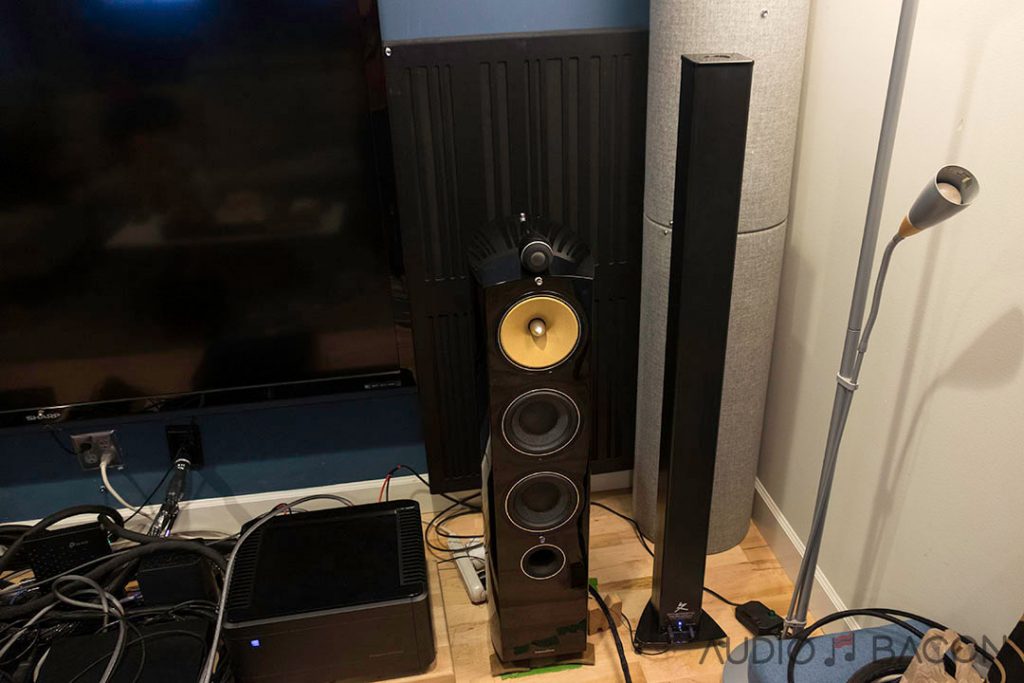
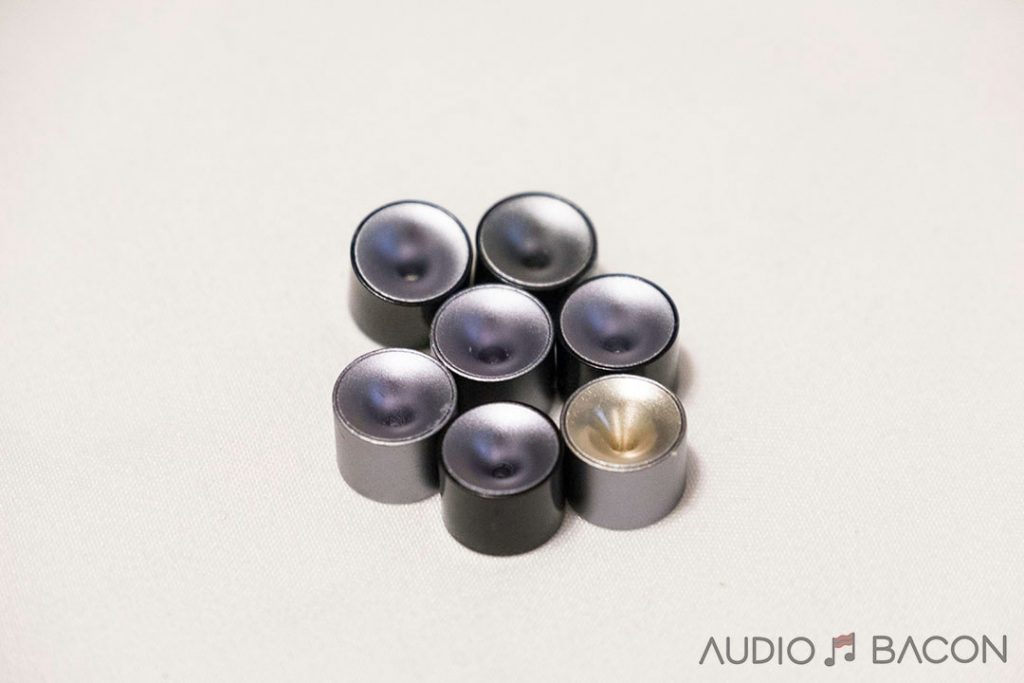

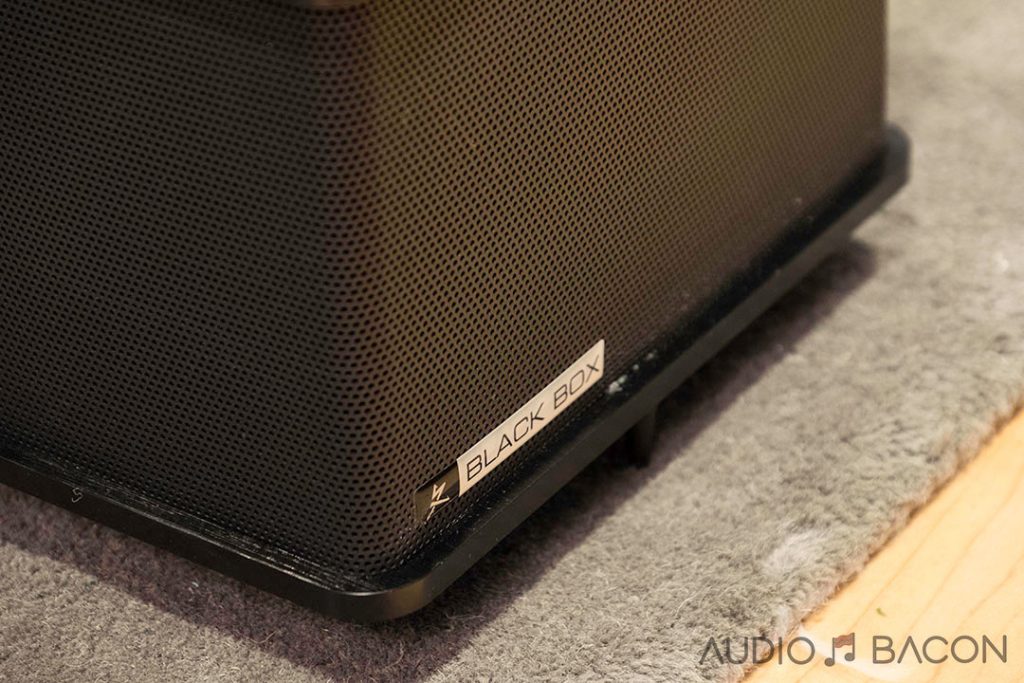
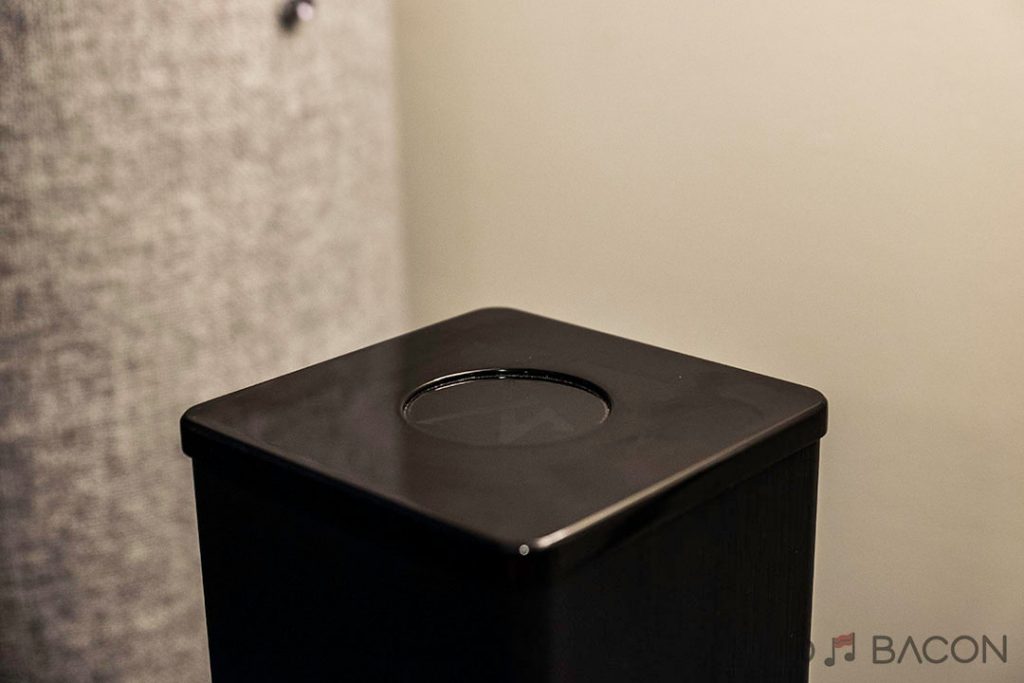

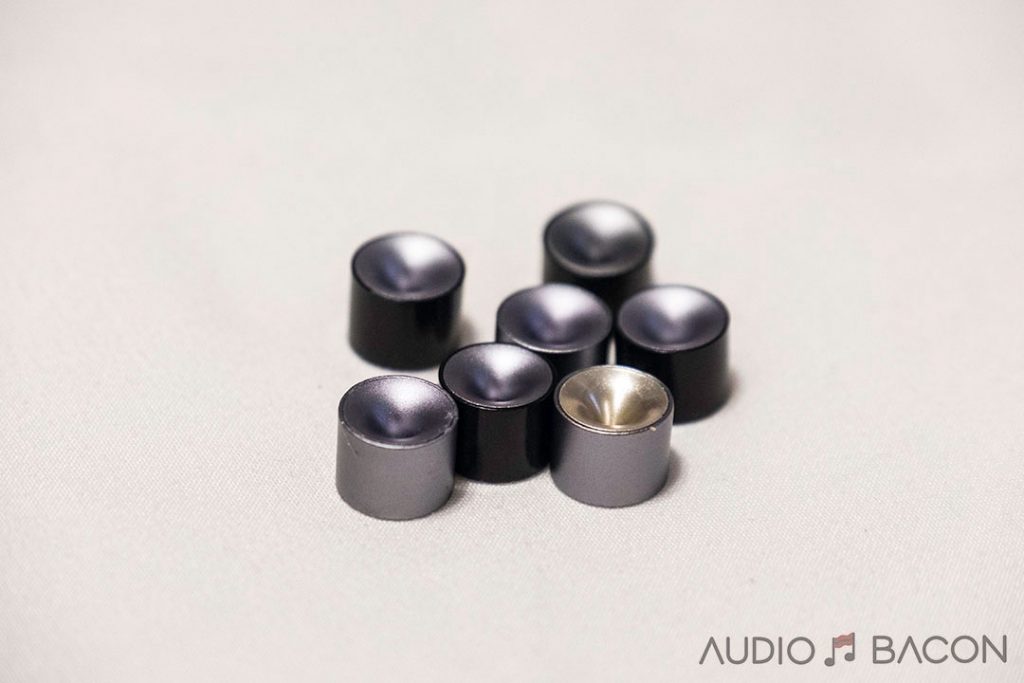
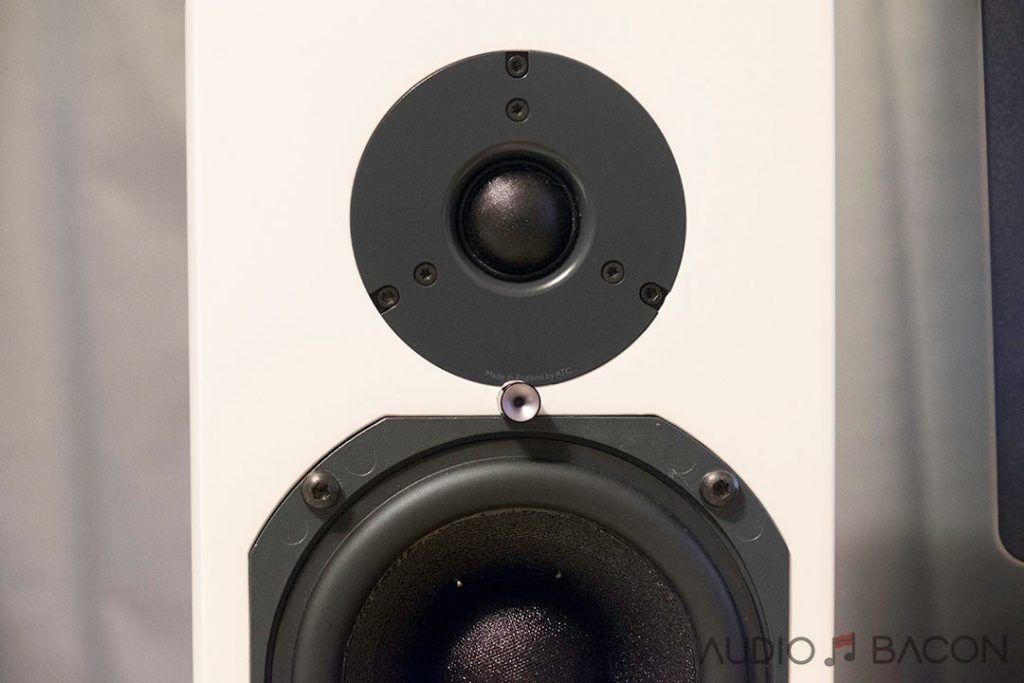
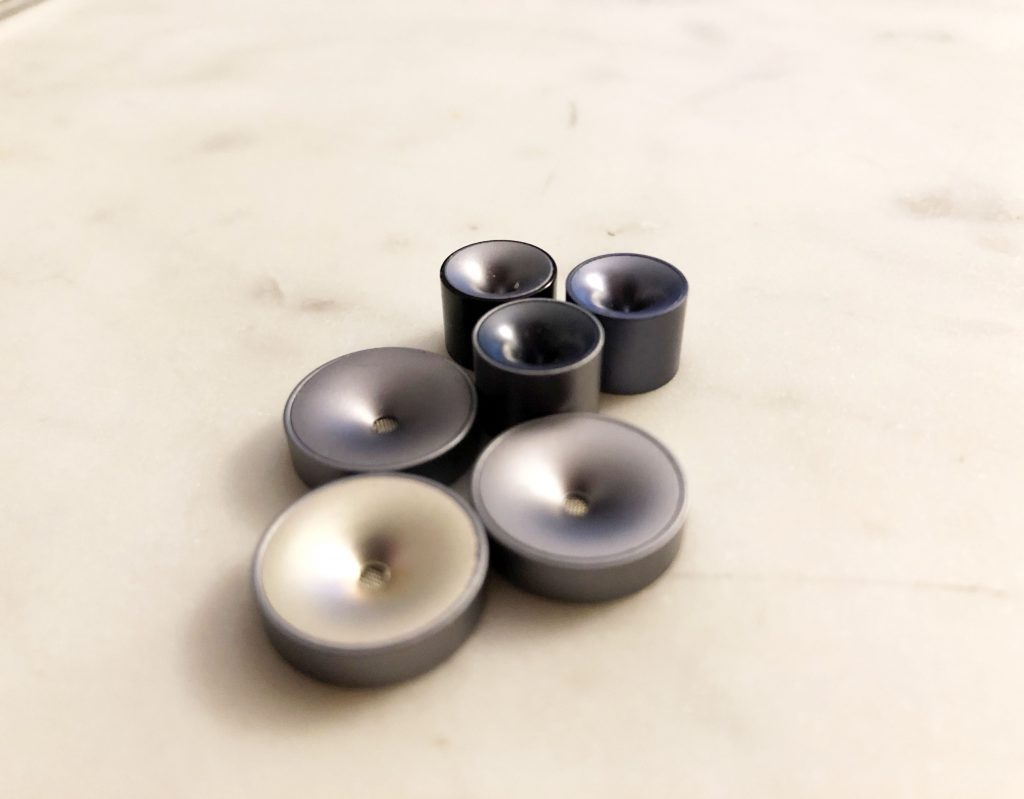
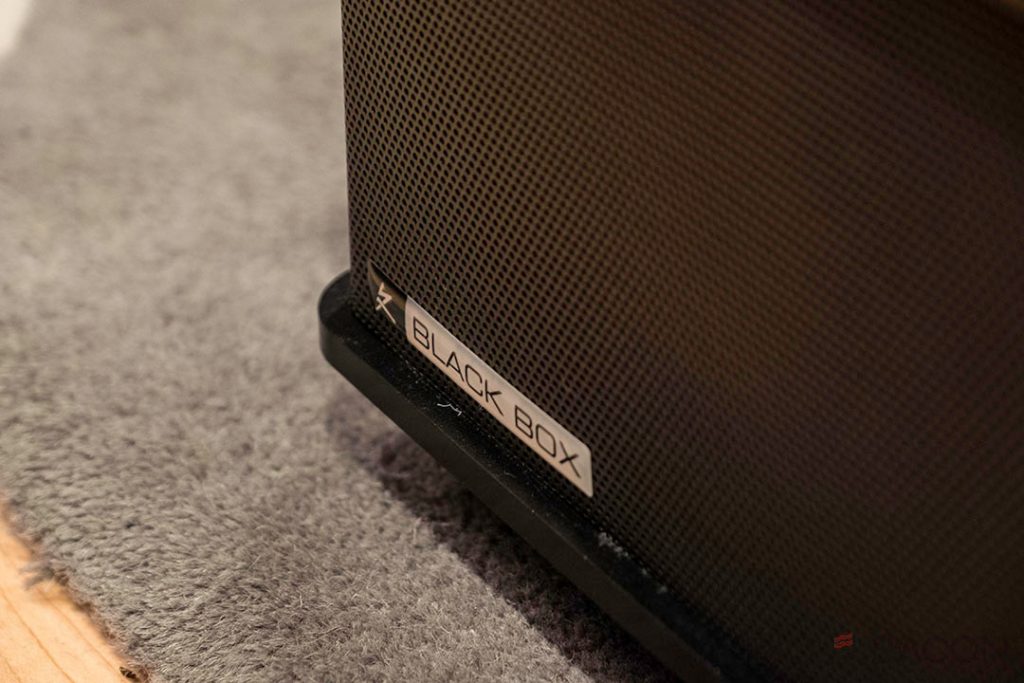
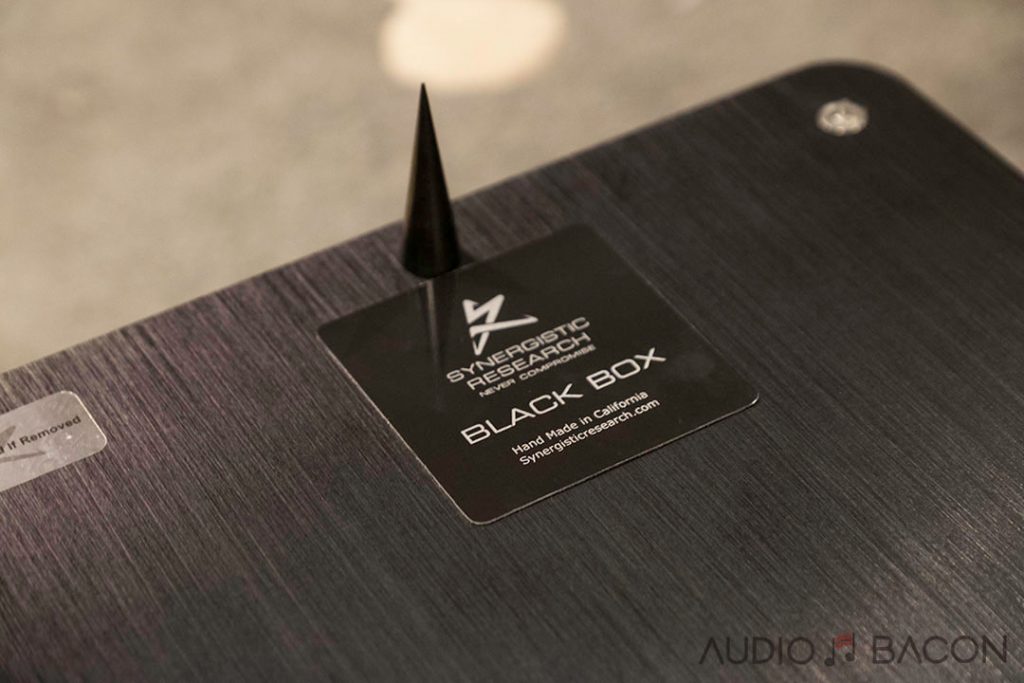
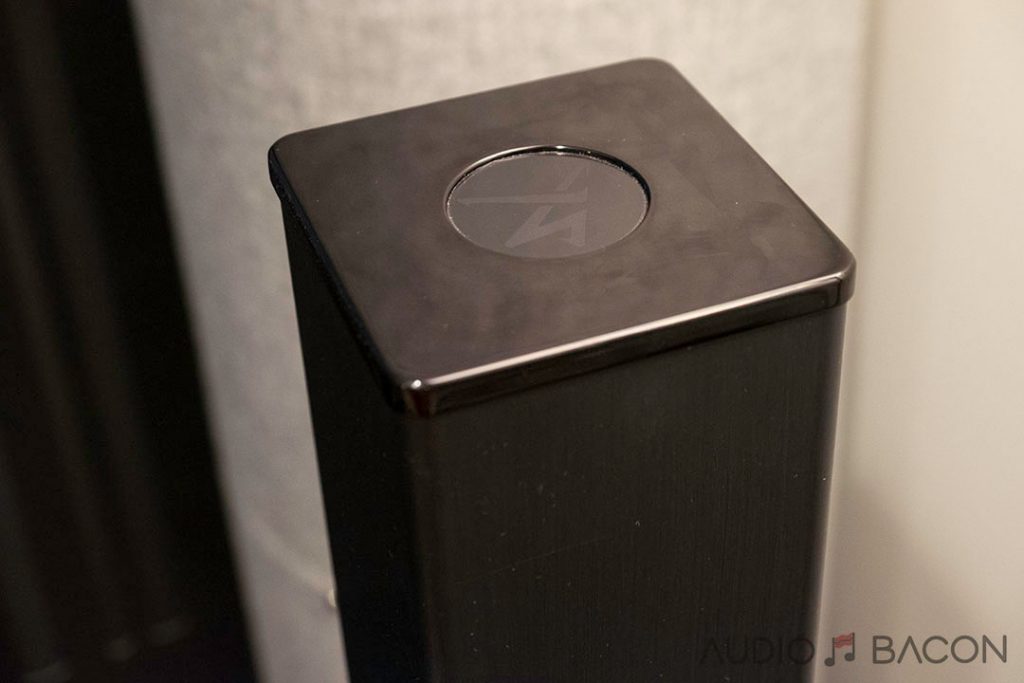

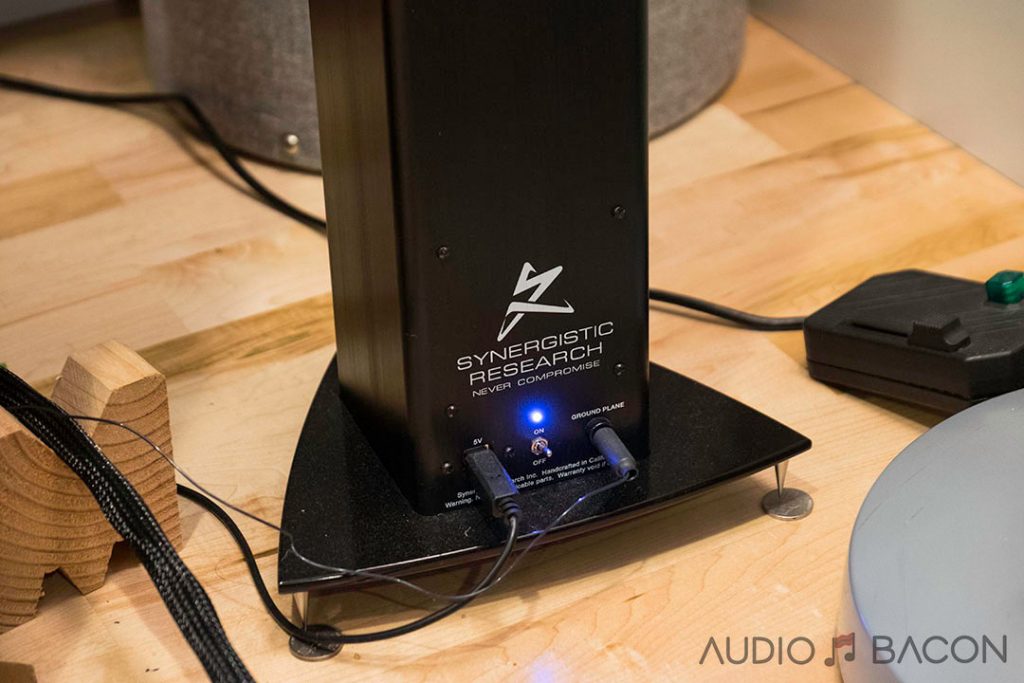




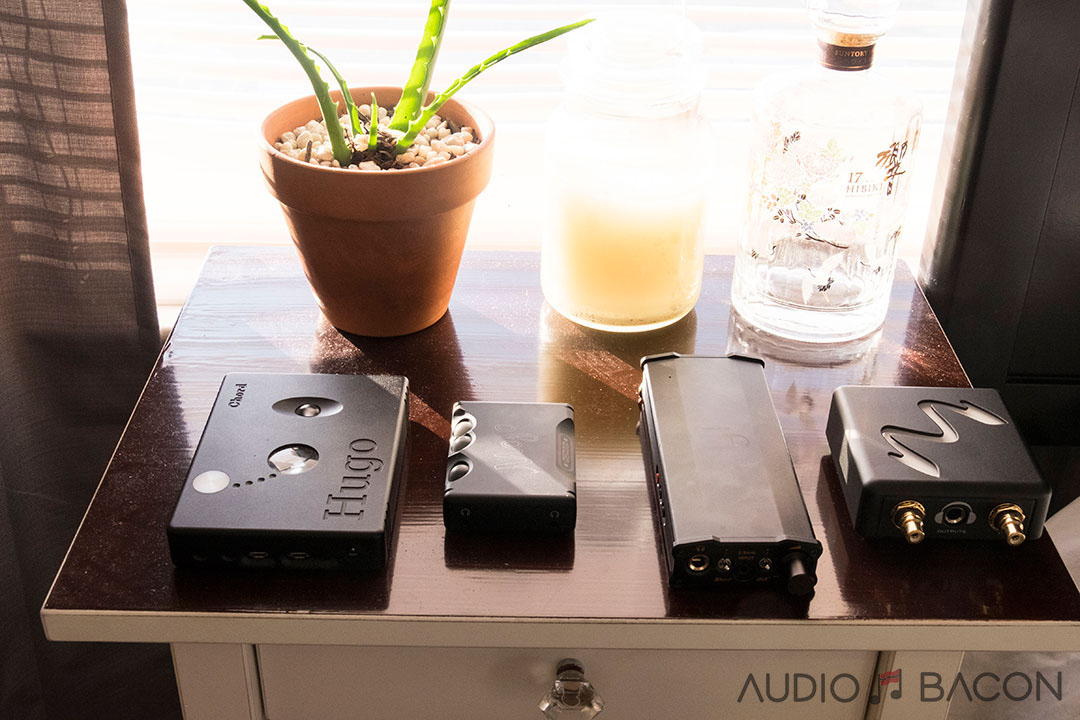
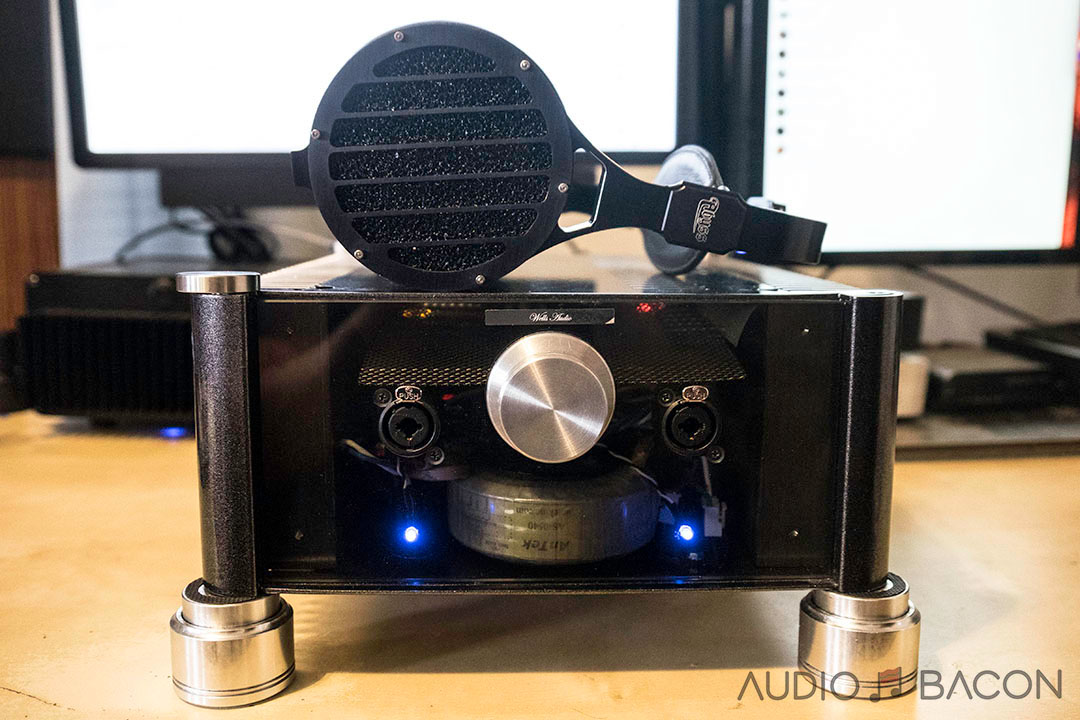

I thought the default setting was Grand Canyon (it was beginning of the year when I purchased the XL4_.